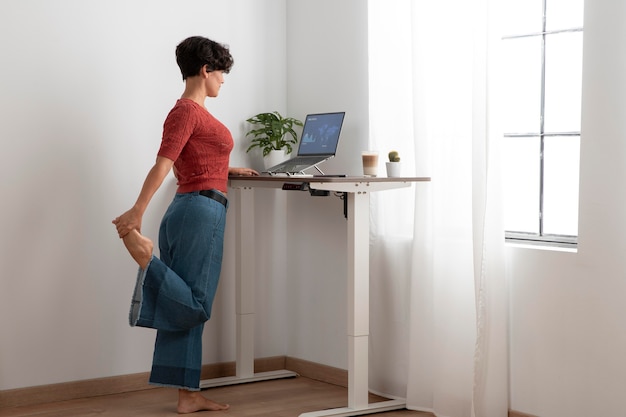Polycystic Ovary Syndrome (PCOS) affects millions of women worldwide, bringing with it a range of metabolic, hormonal, and emotional challenges. While much focus is placed on diet, exercise, and medication, one often-overlooked aspect of PCOS management is posture and ergonomics. Emerging evidence suggests that how you sit, stand, and move throughout the day can influence hormonal balance, insulin sensitivity, energy levels, and even stress — all key factors in PCOS.
The good news? You don’t need expensive equipment or a complete lifestyle overhaul. These 14 evidence-based posture and ergonomics tips are designed for real life — whether you're working from home, commuting, or juggling family and career.
While there’s no single "perfect" posture, research shows that prolonged poor positioning — especially during sedentary work — can contribute to increased cortisol (the stress hormone), reduced circulation, and impaired diaphragmatic breathing. All of these can worsen PCOS symptoms.
Slouched sitting compresses the abdomen, potentially affecting digestion and insulin signaling. Poor neck and shoulder alignment from screen use can trigger tension headaches and fatigue — common complaints in PCOS. By improving your daily ergonomics, you support better hormone regulation, reduce inflammation, and boost energy.

Use a folded towel or small cushion under your sit bones if your chair is too low. This slight pelvic tilt encourages a neutral spine and reduces lower back strain.
Avoid dangling feet. If your desk is high, use a sturdy box or footrest. Grounded feet improve circulation and core engagement.
Raise your laptop with books or a stand so the top of the screen is at or slightly below eye level. This prevents "tech neck" and jaw tension.
Use the backrest to support your lower back. If needed, roll up a sweater for lumbar support. This reduces disc pressure.
Set a silent timer to stand, stretch, or walk for 60 seconds. Even brief movement boosts insulin sensitivity — crucial for PCOS.

Sit tall, place one hand on your belly, and breathe deeply into your abdomen. This lowers cortisol and supports parasympathetic tone.
Crossing legs can tilt the pelvis and strain the lower back. Keep both feet flat and hip-width apart.
A rolled cloth under your wrists while typing prevents nerve compression and supports neutral hand alignment.
This vertical alignment reduces muscle fatigue. Check your posture in a side mirror or photo occasionally.
Use a headset and pace or stand. This increases daily non-exercise activity thermogenesis (NEAT), aiding metabolic health.
Your elbows should be at 90–110 degrees, close to your body. Avoid reaching up or down to type.
Use a supportive pillow and consider a body pillow to keep spine aligned. Poor sleep worsens insulin resistance in PCOS.
Incorporate simple exercises like wall angels or seated rows with resistance bands 2–3 times a week to support posture.
Stress and low mood can lead to slumping. Practice upright posture during stressful moments — it can actually improve mood and confidence.
Managing PCOS is about more than hormones and diet — it’s about creating a supportive daily environment. By making small, sustainable changes to your posture and workspace, you can reduce inflammation, improve insulin sensitivity, and feel more in control.
These tips require minimal gear and fit into real-life routines. Start with one or two changes, build consistency, and notice the difference in your energy, focus, and overall well-being.

Wellness

Wellness

Wellness

Wellness

Health

Health

Wellness

Wellness

Wellness

Wellness

Wellness

Wellness

Health

Fitness

Health

Health